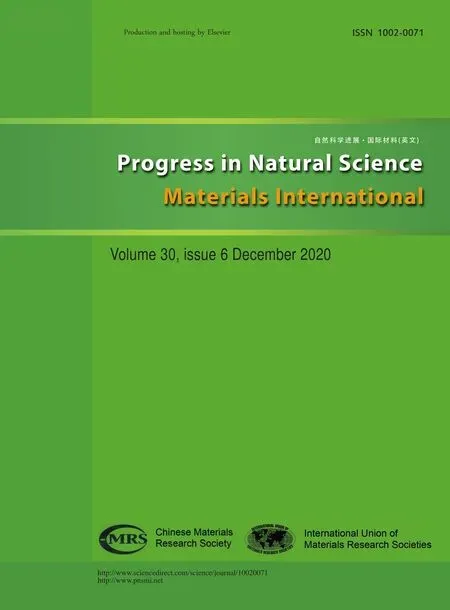Key materials and technologies for fuel cells
Fuel cells efficiently convert diverse fuels directly into electricity without combustion,and they are key elements of a broad portfolio for building a competitive,secure,and sustainable clean energy economy.They offer a broad range of benefits,including reduced greenhouse gas emissions;reduced oil consumption;expanded use of renewable power(through the use of hydrogen derived from renewable resources as a transportation fuel as well as for energy storage and transmission);highly efficient energy conversion;fuel flexibility (use of diverse,domestic fuels,including hydrogen,natural gas,biogas,and methanol);reduced air pollution,criteria pollutants,water use;and highly reliable grid support.Fuel cells also have numerous advantages that make them appealing for end users,including quiet operation,low maintenance needs,and high reliability.Because of their broad applicability and diverse uses,fuel cells can address critical challenges in all energy sectors:commercial,residential,industrial,and transportation.
As a promising candidate for new power supplier,fuel cell is on the way of its commercialization.Although durability,cost and performance are the main issues of fuel cell wide application,aiming at promoting the application,tremendous progress has been made on the fuel cell in the past decade.This special issue provides a series of original research,special topics and review articles on key materials and technologies of fuel cells.These key materials include electrocatalyst,electrolyte material,gas diffusion layer,bipolar plate and sealing material.This special issue published 23 papers,all of which were written by leading international scientists in the fields of fuel cell and materials science and chemical engineering.They cover the following key topics:
Electrocatalyst as a topic issuehave received widespread attention.“Stability of PGM-free fuel cell catalysts:Degradation mechanisms and mitigation strategies”by Jianglan Shui et al.,“Low-dimensional catalysts for oxygen reduction reaction”by Shuhui Sun et al.,“Surface-Confined Pt-based Catalysts for Strengthening Oxygen Reduction Performance”by Zidong Wei et al.,“Applications of M/N/C analogue catalysts in PEM fuel cells and metal-air/oxygen batteries:Status quo,challenges and perspectives”by Shijun Liao et al.and“Carbon-free nanoporous gold based membrane electrocatalysts for fuel cells”by Yi Ding et al.summarize the development of the platinum-based and non-platinum-based electrocatalysts.There are five original researches of“Pyrolysis of Iron(III)porphyrin coated Pt/C toward oxygen reduction reaction in acidic medium”by Yujiang Song et al.,“ZIF-derived Co-N-C ORR catalyst with high performance in proton exchange membrane fuel cells”by Zhiyou Zhou et al.,“Surface Modifications of Pt-based Atomically Ordered Nanoparticles to Improve Catalytic Performances for Oxygen Reduction Reaction”by Hong Zhu et al.,“Large Specific Surface Area S-doped Fe-N-C Electrocatalysts Derived from Metal-Organic Frameworks for Oxygen Reduction Reaction”by Junliang Zhang et al.,and“Nickelintroduced structurally ordered PtCuNi/C as high performance electrocatalyst for oxygen reduction reaction”by Hong Zhu et al..
Electrolyte materialis the subject of several contributions such as Jianguo Liu et al.’s“Understanding of free radical scavengers used in highly durable proton exchange membranes”,Chenxi Xu et al.’s“Electrolyte membranes for intermediate temperature proton exchange membrane fuel cell”,and Zongping Shao et al.’s“Electrolyte materials for intermediate-temperature solid oxide fuel cells”.
Bipolar Platesare also critically important to fuel cell,including metallic bipolar plates and composite bipolar plate.These topics are dealt with by two contributions by Linfa Peng et al.“Towards mass applications:a review on the challenges and developments in metallic bipolar plates for PEMFC”and Zhigang Shaoet al.“A Novel Graphite/Phenolic Resin Bipolar Plate Modified by Doping Carbon Fibers for the Application of Proton Exchange Membrane Fuel Cells”.
Gas diffusion layerplay an important role in supporting the catalytic layer,collecting current,conducting gas and discharging reaction product water in the fuel cell.Its structural optimization is conducive to improving fuel cell performance,as reported in“Performance improvement for air-cooled open-cathode proton exchange membrane fuel cell with different design parameters of the gas diffusion layer”by Chen Zhao et al..
The durability of sealing materialis one of the major challenges to the overall lifetime of fuel cell,which contributions by Bing Li's“Accelerated Test of Silicone Rubbers Exposing to PEMFC Environment”.
Finally,key technologiesalso affect the performance of fuel cell.Six contributions in this special issue are“Key technologies for polymer electrolyte membrane fuel cell systems fueled impure hydrogen”by Pucheng Pei et al.,“Influence of pore size optimization in catalyst layer on the mechanism of oxygen transport resistance in PEMFCs”by Jinting Tan et al.,“Janus few layered graphene with asymmetric wettability as anti-flooding cathode supports in proton exchange membrane fuel cells”by Luhua Jiang et al.,“Effect of poly tetrafluoroethylene (PTFE) in current collecting layer on the performance of zinc-air battery”by Zhenbo Wang et al.,“Measurement and separation of cathodic mass transport resistance in high temperature proton exchange membrane fuel cell”by Gongquan Sun et al.and“Experimental Measurement of Proton Conductivity and Electronic Conductivity of Membrane Electrode Assembly for Proton Exchange Membrane Fuel Cells”by Gongquan Sun et al..
All papers in this special issue are invited contributions and have gone through rigorous review process.I would like to take this opportunity to thank the editors ofProgress in Natural Science:Materials International,Prof.Yafang Han,Dr.Fenfen Liang,and Ms.Xiaomei Ma for their support and guidance.I owe a great deal of gratitude to all contributing authors and all referees of the manuscripts for their excellent contribution and effort,and for their support and cooperation.I hope the readers of this special issue will find the papers interesting as well as useful.
 Progress in Natural Science:Materials International2020年6期
Progress in Natural Science:Materials International2020年6期
- Progress in Natural Science:Materials International的其它文章
- Experimental measurement of proton conductivity and electronic conductivity of membrane electrode assembly for proton exchange membrane fuel cells
- Nickel-introduced structurally ordered PtCuNi/C as high performance electrocatalyst for oxygen reduction reaction
- Large specific surface area S-doped Fe-N-C electrocatalysts derived from Metal-Organic frameworks for oxygen reduction reaction
- Surface modifications of Pt-based atomically ordered nanoparticles to improve catalytic performances for oxygen reduction reaction
- Accelerated Test of Silicone Rubbers Exposing to PEMFC environment
- A novel graphite/phenolic resin bipolar plate modified by doping carbon fibers for the application of proton exchange membrane fuel cells
